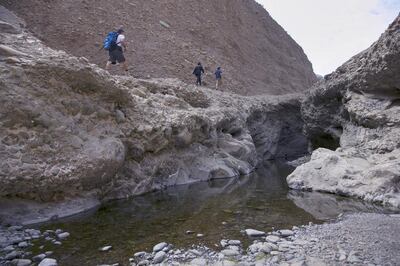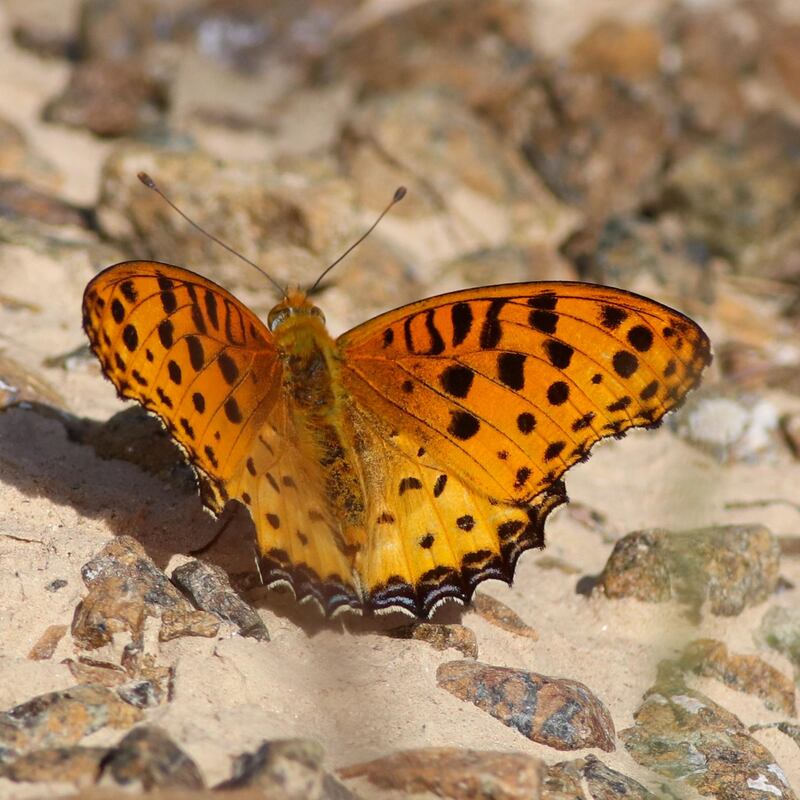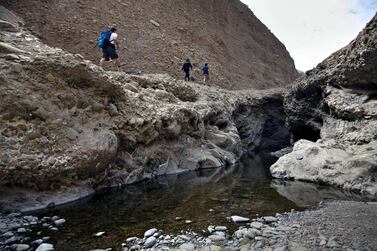A butterfly species common in the Himalayas has been found in the UAE for the first time.
Two Indian Fritillary, native to mountainous regions of northern India, Afghanistan, Pakistan and Nepal, were discovered in Wadi Wurayah National Park in Fujairah earlier this month.
Experts said the two butterflies, a male and female, were likely “opportunistic migrants” which arrived to take advantage of favourable conditions brought about by the region’s rainfall from October until January, state news agency Wam reported.
They said it was unlikely they would remain for the hot UAE summer.
They were discovered by naturalist, Binish Roobas, during a group visit to update earlier surveys of plant and insect diversity in the wadi, the UAE's first national park, following the bout of persistent rain during the winter.
The butterflies were seen flying among a group of Plain Tigers, a toxic native species, which looks similar to the Indian Fritillary.

"It might easily have been overlooked in that group, but I noticed a slight difference in its size and colour and a greater difference in the way it flew,” he said.
He identified the species quickly from his experience categorising butterflies in South and Southeast Asia.
Mr Roobas had previously found two other new species of butterflies in the UAE in 2018.
He also co-wrote a forthcoming book on butterflies of the UAE, due to be published this autumn, with Gary Feulner, chairman of the Dubai Natural History Group. Mr Feulner was also on the expedition when they discovered the Indian Fritillary.
“A great deal of our current knowledge of the flora and fauna of the UAE comes from observations and investigations by independent amateur naturalists,” Mr Feulner told national news agency Wam.
“Their efforts, including exploration, study and publication, should be encouraged, not restricted."
Mr Roobas worked in Dubai for a number of years but returned to his home country, India, last year.
However he continues to visit the UAE to conduct studies on butterflies, dragonflies and spiders. His research was recognised in 2016 when he secured the Sheikh Mubarak bin Mohammed Al Nahyan Award for Natural History, which was presented by Minister of Tolerance Sheikh Nahyan bin Mubarak.
Wadi Wurayah, which is part of the Hajar mountain range, was declared a ‘Biosphere Reserve’ by Unesco in 2018.
The 220 square kilometre area is home to more than 800 species of flora and fauna, including some unique to the area.
The wadi’s pools, streams and waterfalls support a rich variety of wildlife that include the Omani owl and the urothemis thomasi dragonfly, which was so rare it had not been sighted since 1957 and was thought to be extinct.







